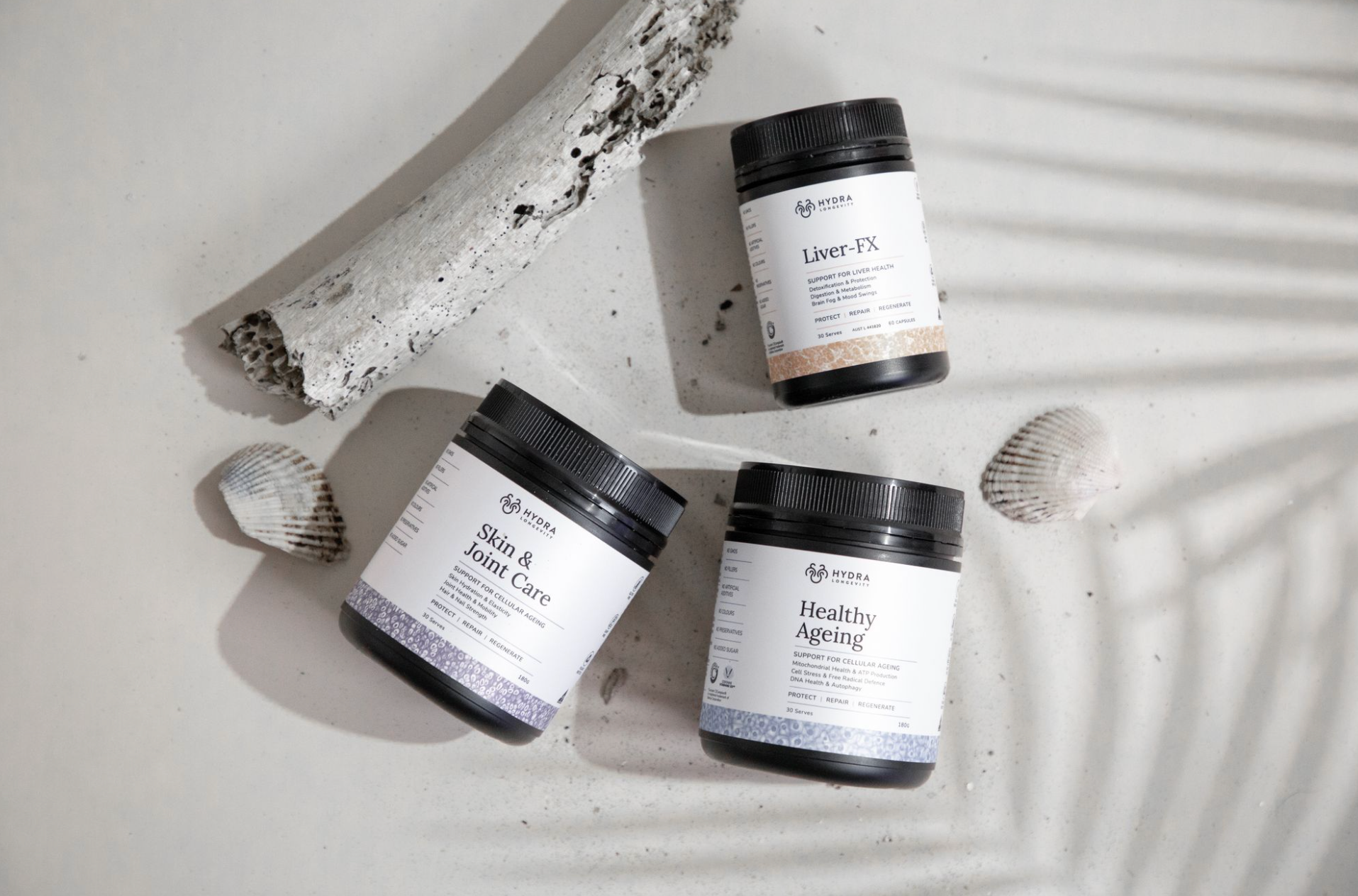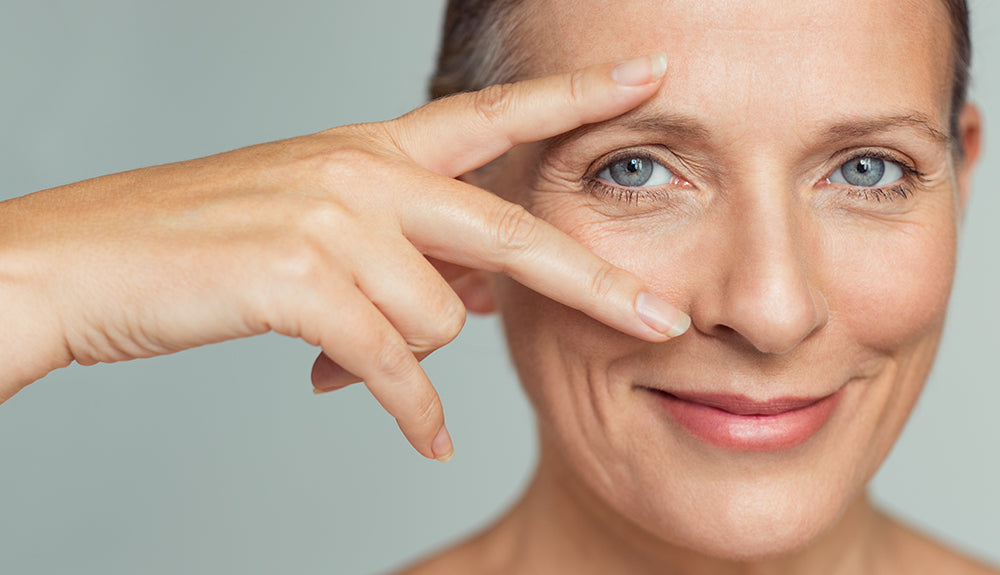What do antioxidants, ORAC scores, free radicals, oxidative damage, reactive oxygen species (ROS) and redox all have in common? They are all involved in the process of how we age and the development of chronic diseases. But if they are so important to human health then why is so little known about them and how to prevent them from making people sick?
It was back in 1956 that scientists first suggested that free radicals were the cause of ageing and degenerative disease. According to the free radical theory of ageing, free radicals break cells down over time, and as the body ages, it loses the ability to fight off these free radicals. This results in more free radicals, more oxidation, more damage, more disease and more ageing signs like wrinkles, grey hair and lower energy.
Some of the unseen damaging effects of oxidation from free radicals are DNA damage, nerve excito-toxicity, mitochondrial dysfunction, cell membrane damage, protein damage and a compromised immune system.
Over the past 60 years, we have come ahead in leaps and bounds with our understanding of all the ‘players’ involved in what causes oxidative damage to our cells and what we can do about it.
We now understand that it’s not merely the generation of free radicals but it’s also the breakdown of the antioxidant system to mop up or quench free radicals that causes us to age more quickly and develop chronic diseases.
Let’s get a bit more of an understanding of the main players involved in oxidative damage.
The Attackers - Free Radicals
These are electro-chemically unbalanced molecules with an extra electron in their outer shell or membrane. These molecules are very unstable and can be short lived and often donate their extra electron to surrounding cell structures leading to tissue, protein, enzyme and DNA damage. You might also know free radicals as reactive oxygen species (ROS) and reactive nitrogen species (RNS).
Causes of free radical damage and ROS:
- Exposure to UV Radiation – from the sun, x-rays, scans, lighting, technology
- Smoking
- Air pollution/smog
- Chemicals/pesticides
- Food preservatives
- Pharmaceutical drugs
- Over exercise
- Surgery
- Stress
- Poor food choices resulting in nutritional and antioxidant deficiencies
- Infections and fevers
- Some normal cellular respiration and functions also produce small amounts of ROS
The Defenders - Antioxidants
These are molecules that are present in low concentrations that reduce, quench, mop up and prevent tissue oxidation. Antioxidants neutralise unstable free radical molecules so they can’t donate their extra electrons to sensitive cellular tissue. They prevent the body from going ‘rusty’ and ageing too quickly. Lists have been compiled to show the highest antioxidant containing foods called the Oxygen Radical Absorbance Capacity (ORAC).

Antioxidant defence networks
These networks in the body work closely together and act as electron buffers and stabilise free radicals. These networks include internal biological antioxidant enzymes such as catalase (CAT), superoxide dismutase (SOD) and glutathione (GSH) and we also have external antioxidants that we consume e.g. vitamin C and B-carotene.
Redox Balance
Redox describes a chemical reaction that takes place where a molecule can gain or lose an electron causing an increase or decrease in oxidative damage to cellular membranes. What we looking to do is promote a balance between antioxidants (the protectors) and ROS/RNS (the damagers). It is the imbalance between these two combatants that has been identified as the driver of premature ageing, atherosclerosis, diabetes, alzheimers and cancer.
We’ve mentioned the importance of getting the right ‘balance’. Free radicals aren’t necessarily focussed on destruction. We’ve discovered that in low amounts, they can actually lend a hand in helping us. In our immune system for instance, there are white blood cells called phagocytes to make their own free radicals and store them inside their bodies waiting for disease causing microbes to invade our body and then the phagocyte can absorb the bug and release those stored free radicals to destroy the bug.
The issue is when there are too many free radicals. If the production of free radicals exceeds the body’s ability to control them then this results in oxidative stress and mitochondrial damage.
We need to maintain this balance on a day by day basis. To do this our cells contain antioxidant enzymes, mentioned above (SOD, GSH and CAT), and these enzymes are reliant on optimal nutrition and adequate phytochemical supply to function properly. Daily doses of external antioxidants are required as our internal antioxidant enzymes are often overwhelmed by the load of free radicals and ROS production through our modern-day lifestyles and environments.
There are a wide number and different molecules providing antioxidant effects and they can be broken up into the following classes: vitamins; fats and lipids; amino acids, peptides and proteins; plant derived antioxidants (phytochemicals); minerals; and enzymes. These classes all have different functions, targets and signalling capabilities which is why it is so important to have a wide variety of these antioxidants consumed every day.
What are the Best Foods Containing Antioxidants with the Highest ORAC Scores?
Fruits
Blueberries, Goji berries, Pomegranate, Red grapes, Acai berries, and Bilberries
Plants and herbs
EGCG from Green Tea, Resveratrol from Japanese Knotweed, Curcumin from Turmeric, Rosemary, Lutein/EFAs/Astaxanthin from Marine Phytoplankton, Spinach, Broccoli, Carob, Beetroot, Ginger, Cinnamon
Vitamins
Vitamin C, Vitamin A and B-carotene, CoQ10, Vitamin D, Alpha Lipoic Acid
Amino Acids
Glycine, Glutamine, L-carnitine, N-acetyl-carnitine
Minerals
Selenium, Zinc, Iodine from Kelp
What are the Best Ways to Fight Free Radical Damage?

1. Start eating foods rich in antioxidants
- Fruits and vegetables are some of the richest sources of antioxidants so double your intake of these! The brightest coloured foods contain the most antioxidants so try to get as many colours of the rainbow into each meal.
- Drink lots of green tea. White, black and rooibos teas also have some antioxidant content.
- Add nuts, seeds and some seaweed to your meals. Stir them into salads, stir-fries or fruit salads.
- Indulge in a piece of dark chocolate as cocoa contains antioxidants. Chose raw and organic where you can and try to get over 70% cocoa content.
2. Avoid pollutants and toxic chemicals
- Improve your drinking water quality to have less environmental pollutants – get a filter.
- Buy household cleaners and cosmetics that are chemical free and more natural.
- Limit your use of medication and antibiotics. Try natural ways of managing your symptoms before reaching for drug medications.
- Do some exercise every day. Being sedentary is a major cause of free radical damage so move more. Simply trying to get over 10,000 steps a day is a good start. But remember not to overdo it, excessive exercise and high acid build up causes lots of free radical damage in your muscles and cells.
- Try to eat less. Every time you eat, you end up developing free radicals from the breakdown process of turning food into energy. The more often you eat, the more ROS you develop. It’s interesting that scientist have found life extension and gene activating activity from restricting calorie intake and intermittent fasting.
Researchers have discovered literally thousands of antioxidants in foods that we can consume and they exist in different forms and have various functions in our cells. Because of this complexity, scientist believe that the best way for antioxidants to combat free radicals is when they are in their whole food form and the ‘phyto-nutrients’ have the best chance of working synergistically with each other to quench excessive free radicals.
We need to realise that these high ORAC and colourful foods are greater than the sum of all their parts – antioxidants are important but so are the proteins, fats, fibres, minerals, and fluids. Our goal should be to provide the body with nutrient dense, unprocessed, whole foods rather than just an antioxidant supplement to prevent free radical damage.
Here’s a Simple Summary to Remind you About What we’ve Learnt About Free Radicals, ROS and Antioxidants
- Our bodies produce free radicals as by-products of ordinary bodily activities like breathing or other vital cellular functions. Our bodies are able to cope with this small amount of free radical production, however, these days we have the additional harmful exposure to toxins and pollutants, a poor diet of processed foods with minimal plant matter, radiation, and high amounts of stress.
- Antioxidants help slow down the effects of free radicals and protect us from disease and reduce the signs of early ageing. Antioxidant sources include plant foods like fruits or veggies, green or white teas, cocoa, spices, and herbs.
- We know that the best way to combat free radical formation is through eating healthily and having a clean low stress lifestyle. The reality is that eating a healthy diet is not always easy, every meal and every day, with our busy lifestyles, so we have developed Healthy Ageing Essentials and Body Revitaliser Essentials. These blends are packed full of all the whole plant foods with the highest ORAC antioxidant levels available to provide extra protection and repair to your cells and DNA so you can live a longer and healthier life.





